San Francisco - 1901, The Palace Hotel
The Palace Hotel
Aleister Crowley came to San Francisco twice; the first time in 1901 — five years before the monstrous 7.9 earthquake that destroyed some 28,000 buildings and killed more than 3,000 people — and again in 1915, a decade after the city saw astonishing growth in its rebuilding attempts. Because of the city’s historic “firsts” for the United States (first Chinatown with its infamous opium dens as well as the first Japantown in the country), I will be delving into Crowley’s experiences in the city by the bay over several entries.
After a mountain climbing expedition in Mexico earlier in the year, Crowley decided to head north-west through Texas. Boarding the Southern Pacific Railroad in El Paso on April 24, 1901, the two-day journey that would bring him into California, and up the coast a bit where he might have first felt the cool, coastal offshore clouds the area is so well known for as the train just skirted the Monterey peninsula.
Disembarking at the San Francisco station at Townsend and 3rd Streets, a short, one-mile carriage ride would take him to the only hotel in town that a self-respecting gentleman would reside, The Palace Hotel, on the corner of New Montgomery and Market Streets. Constructed in 1875, wealthy financier William Chapman Ralston built what he hoped would be the grandest hotel west of the Mississippi. Towering seven stories and dominating the San Francisco skyline, it boasted 14-foot-high ceilings and elegant rooms of white and gold in an era when dark red and emerald green flocked velvet wallpaper was the norm for Victorian interiors. Every single guest-room offered some of the most innovative amenities of the day, including electronic call buttons that would beckon a concierge to one’s bidding, and full en suite bathrooms. Crowley’s arrival in San Francisco and to The Palace Hotel corresponded with President McKinley, just a few days later, and the whole town was abuzz with excitement and activity.
McKinley had just been inaugurated a month prior, and had started off on what was going to be a grand, six-week tour of the Northwest and the entirety of the Pacific Coast. William McKinley’s wife, Ida, took ill and was on death’s door when they arrived in San Francisco. Their official touring party of 43 — cabinet members, executive staff, friends, servants and newspapermen — holed up in the Palace Hotel for more than a week, before cutting their trip short and heading back to Washington. Sadly, McKinley would be assassinated less than four months later, on September 14, 1901.

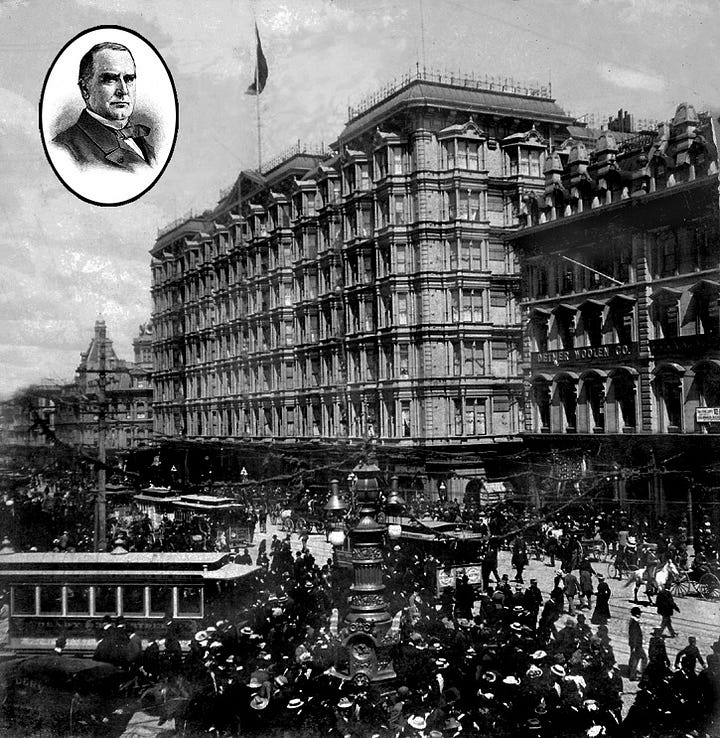
Perhaps the most stunning aspect architect John P. Gaynor created was a huge central courtyard known as the “Grand Court;” a marble-tiled promenade, and a tropical garden filled with exotic plants, statuary and fountains. Topped with a gorgeous skylight, the space extended the full length of the entire building. Each of the seven floors above, was supported with white, double columns ascending towards the heavens. Guests would walk the outer hallways behind these pillars and white railing, looking down on arriving guests as the Grand Court was large enough accept the horse-drawn carriages that would being driven into the hotel’s interior. To give some context as to its size, the Grand Pacific Hotel in Chicago covered 58,145 square feet compared to the Palace Hotel’s 96,250 square feet. And while the Grand Hotel in Paris had only 720 rooms, San Francisco’s Palace Hotel boasted 755 rooms, all above ground.
Other amenities of the hotel include a billiards room, several private parlors rooms for ladies to privately adjust their corsets or take in a cigarette (something one would never do in public), a grand gilt bar with the choicest liquors, wines, and concoctions for imbibing, and an “office” space for gentlemen.
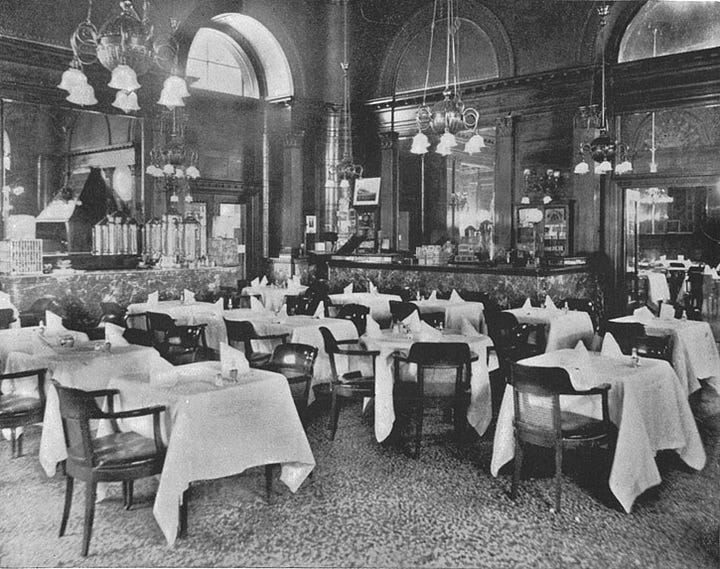
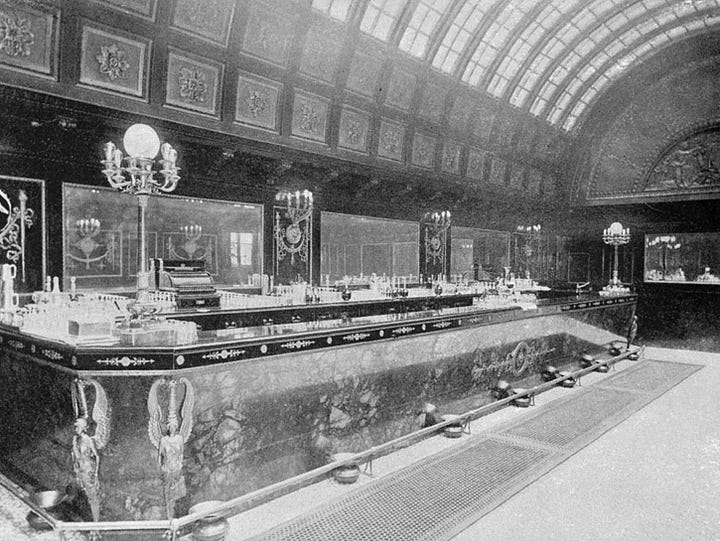

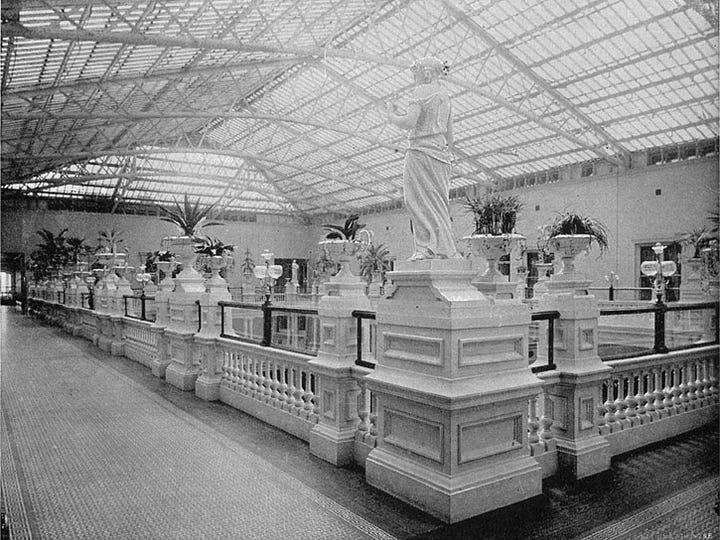
The Men’s Grille shown above, was a great room with an arching ceiling of strictly Gothic style for gentlemen who needed to conduct business or wanted the privacy away from the ladies, plus an exclusive Ladies’ Grille which was not quite so opulent, for those women traveling alone or who may want to gossip with other ladies in the hotel. The American Dining Room, capable of seating 600 guests, was incandescently lit with small electric lights giving perfect elegance to the soft tones of gray and gold. Some guests preferred to dine privately, à la carte (now known as “room service” when a meal is served in one’s room), but for those couples who wished to see or be seen, this resplendent eating establishment provided the opportunity.
What might Aleister have eaten while in San Francisco? Well, I’ll be making separate entries for the Chinese cuisine available as well a notorious San Francisco-based cocktail, and possibly a first excursion for him into Japanese food. But the closest menu I could find for 1901 was this 1907 offering. Interestingly, it is offered in both French and English. Why French, might you ask? It goes back to the British monarchy and a nod to the historical use of French as the language of the royal court. This tradition dates back to the Norman Conquest of England in 1066, when French became the language of the ruling class. Even though English eventually became the primary language of the country, French continued to be used in official and ceremonial contexts, including royal banquets and menus. This tradition has persisted over the centuries, and today, the use of French in the royal family's banquet menu is a reflection of this historical legacy.
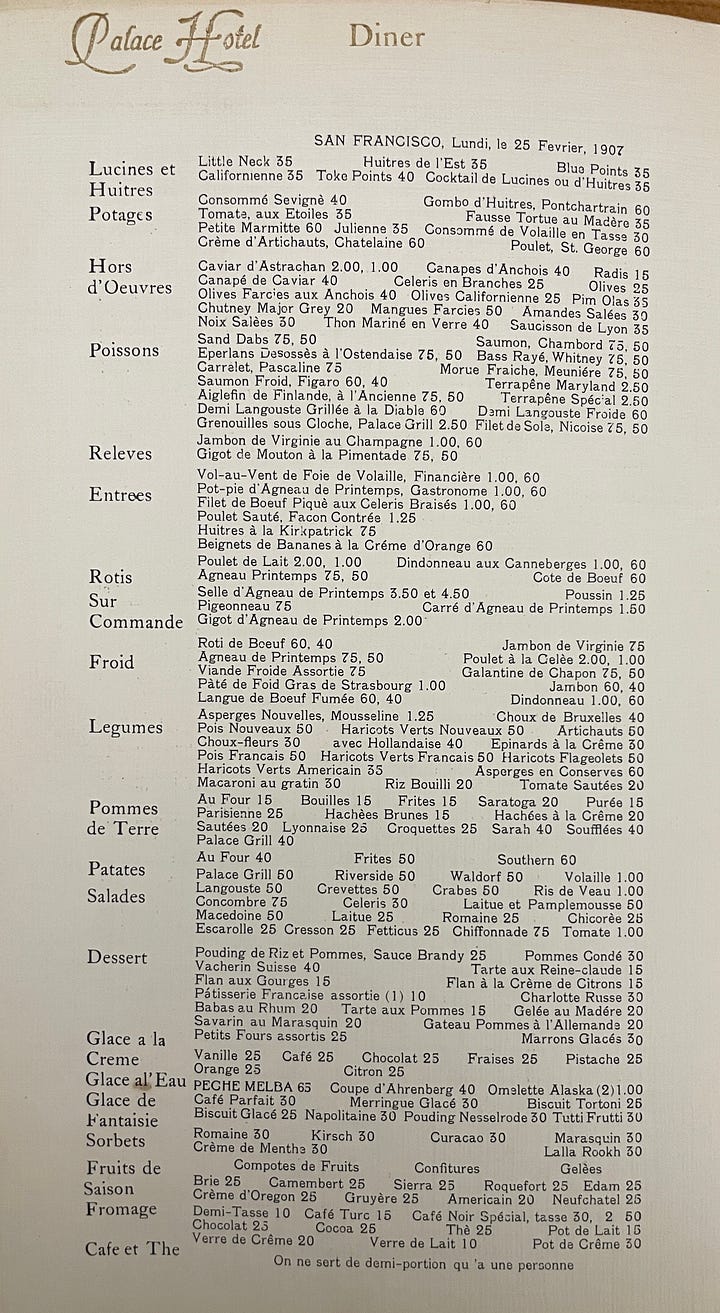
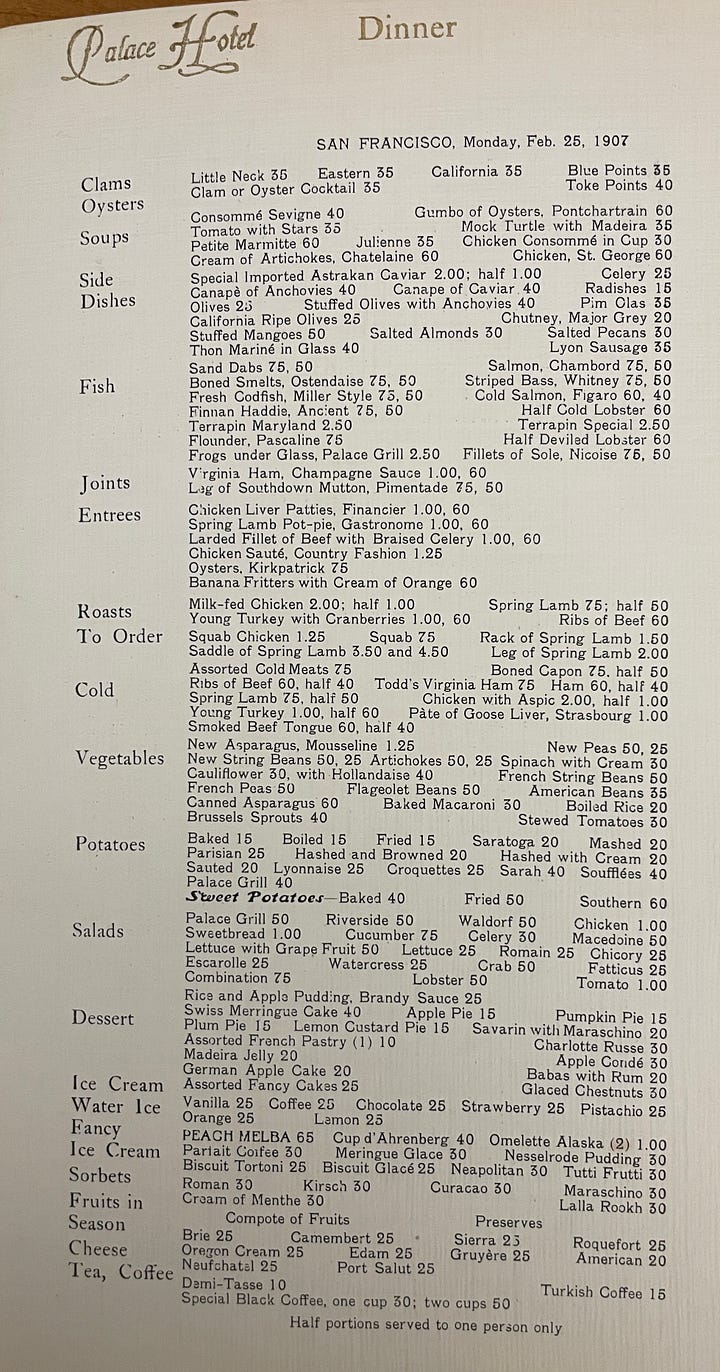
I regret that Substack’s infrastructure doesn’t allow me to post the entirety of these very vertical images. The full catalogue of offerings reads:
Clams
Little Neck, Eastern, California, or Clam Cocktail
Oysters
Blue Points, Toke Points, or Oyster Cocktail
Soups
Consommé Sévigne, Gumbo of Oysters Pontchartrain, Tomato with Stars, Mock Turtle with Madeira, Petite Marmitte, Julienne, Chicken Consommé in Cup, Cream of Artichoke Chatelaine, or Chicken St. George
Side Dishes
Special Imported Astrakan Caviar, Celery, Olives, Stuffed Olives with Anchovies, Pim Olas (olive stuffed with Spanish pepper), California Ripe Olives, Major Grey Chutney, Stuffed Mangoes, Salted Almonds, Salted Pecans, Thon Mariné in Glass (marinated tuna), or Lyon Sausage
Fish
Sand Dabs, Salmon Chambord, Boned Smelts Ostendaise, Whitney Striped Bass, Miller Style Fresh Codfish, Cold Salmon Figaro, Finnan Haddie Miller Style, Half Cold Lobster, Maryland Terrapin, Terrapin Special, Pascaline Flounder, Half Deviled Lobster, Frogs Under Glass, Fillets of Niçoise Sole
Joints
Virginia Ham with Champagne Sauce, Leg of Southdown Mutton Pimentade
Entrées
Chicken Liver Patties Financier, Gastronome Spring Lamb Pot-Pie, Larded Fillet of Beef with Braised Celery, Country Fashion Chicken Sauté, Kirkpatrick Oysters, Banana Fritters with Cream of Orange
Roasts To Order
Milk-fed Chicken (whole or half), Spring Lamb (whole or half), Young Turkey with Cranberries, Ribs of Beef, Squab Chicken, Squab, Rack of Spring Lamb
Cold
Assorted Cold Meats, Boned Capon, Ribs of Beef (whole or half), Todd’s Virginia Ham, Ham (whole or half), Young Turkey (whole or half), Pâté of Strasbourg Goose Liver, Smoked Beef Tongue (whole or half)
Vegetables
New Asparagus Mousseline, New Peas, Cauliflower with or without Hollandaise, French String Beans, French Peas, Flageolet Beans, American Beans, Canned Asparagus, Baked Macaroni, Boiled Rice, Brussels Sprouts, Stewed Tomatoes
Potatoes
Baked, Boiled, Fried, Saratoga, Mashed, Parisian, Hashed and Browned, Hashed with Cream, Sautéed, Lyonnaise, Croquettes, Sarah, Souffléed
Sweet Potatoes: Baked, Fried, Southern
Salads
Palace Grill, Riverside, Waldorf, Chicken, Sweetbread, Cucumber, Celery, Macedoine, Lettuce with Grape Fruit, Lettuce, Romain, Chicory, Escarole, Watercress, Crab, Fatticus, Combination, Lobster, Tomato
Dessert
Rice and Apple Pudding with Brandy Sauce, Swiss Meringue Cake, Apple Pie, Pumpkin Pie, Plum Pie, Lemon Custard Pie, Savarin with Maraschino, Assorted French Pastry, Charlotte Russo, Madeira Jelly, Apple Condé, German Apple Cake, Babas with Rum, Assorted Fancy Cakes, Glacéd Chestnuts
Ice Cream
Vanilla, Coffee, Chocolate, Strawberry, Pistachio
Water Ice
Orange, Lemon
Fancy Ice Cream
Peach Melba, Cup d’Ahrenberg, Omelette Alaska, Parfait Coffee, Meringue Glacé, Neapolitan, Tutti-Frutti
Sorbets
Roman, Kirsch, Curacao, Maraschino, Cream de Menthe, Lalla Rookh
Fruits in Season
Compote of Fruits, Preserves
Cheese
Brew, Camembert, Sierra, Roquefort, Oregon Cream, Edam, Gruyère, American, Neufchatal, Port Salut
Tea, Coffee
Demi-Tasse, Turkish Coffee, Special Black Coffee
Sadly, I have not come across any specific notes as to what Crowley’s menu choices were (yet). But the menu above is a fairly standard offering to a well-bred Victorian who would start their meal with clams or oysters, move on to a soup before three starters; usually a fish, a fowl, and a meat, all accompanied with appropriate vegetables and potatoes. Of course all these would be served with appropriate wine pairings. Salads were served after the heavy meal as it was thought to aid in digestion, and then a dessert and/or cheese course would finish out the event, often with coffee and brandy.
On Friday, May 3rd, 1901, at the Port of San Francisco, Aleister boarded the Nippon Maru steamship, bound for Honolulu and destinations further East. Just five years after his first visit, on April 18, 1906, the earthquake would destroy more than 80% of San Francisco, its destruction being caused more by the subsequent fires than the quake itself. Many of the first were started by the San Francisco Fire Department when they attempted to create firebreaks, demolished buildings with dynamite without proper training with that deadly explosive. In total the fires burned for four days and nights and The Palace Hotel did not escape unscathed:
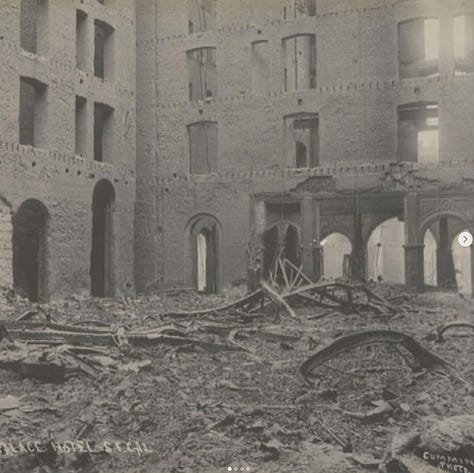
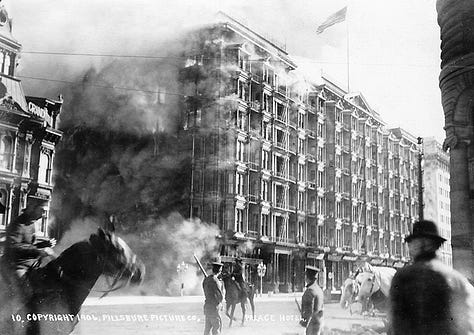
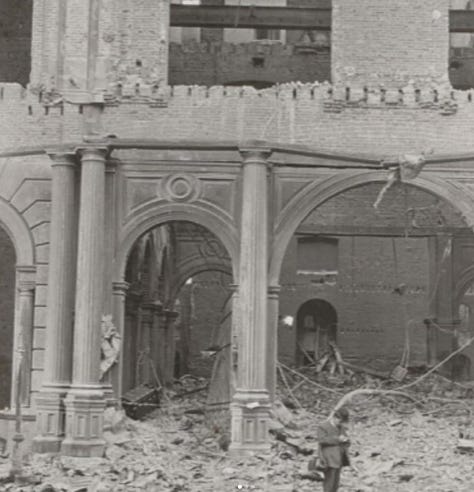
The city began a massive reconstruction effort and much was completed by the time Aleister revisited in 1915, just in time for the Panama-Pacific International Exhibition. The Palace Hotel was rebuilt with many significant changes; namely that the Grand Court where the carriages once brought anxious guests was closed off and turned into an even more beautiful dining room as seen below, during a recent visit I took for research. The front doors recall the grandeur of the Gilded Age, and of note, I offer a small cream pitcher, pilfered from the hotel by my Grandmother in the mid-1940s (who knew that 80 years later, I’d be writing about this famous hotel?)
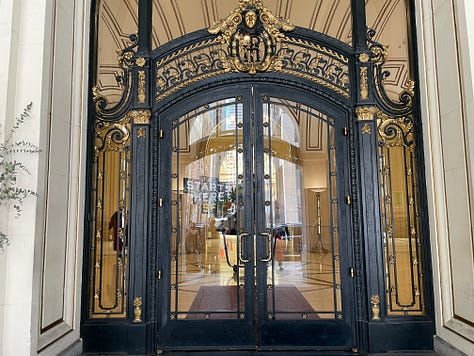
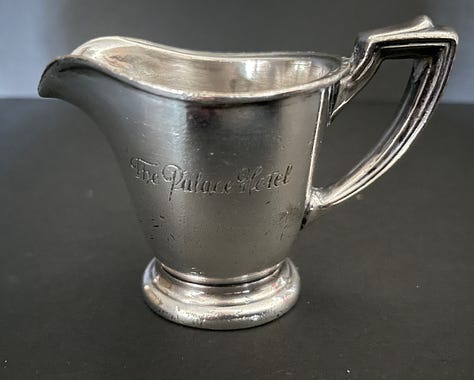
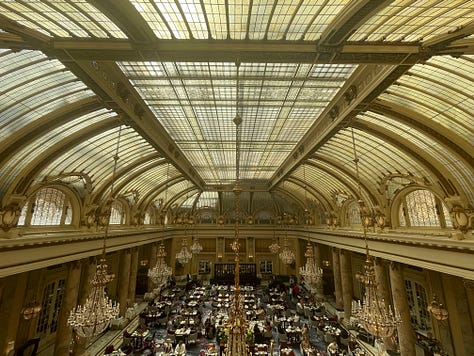


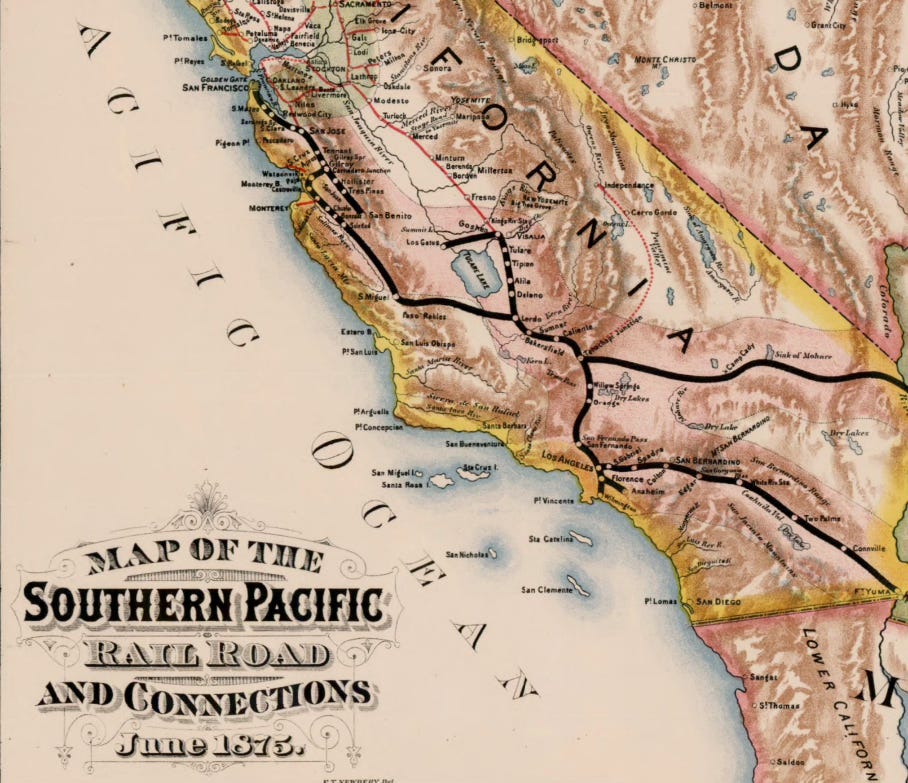
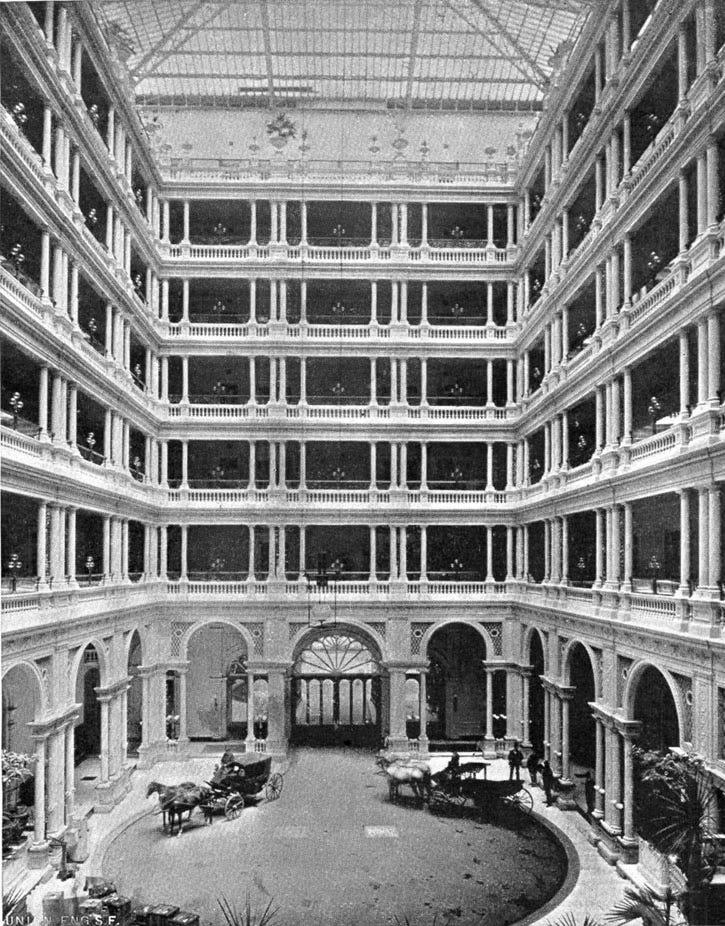
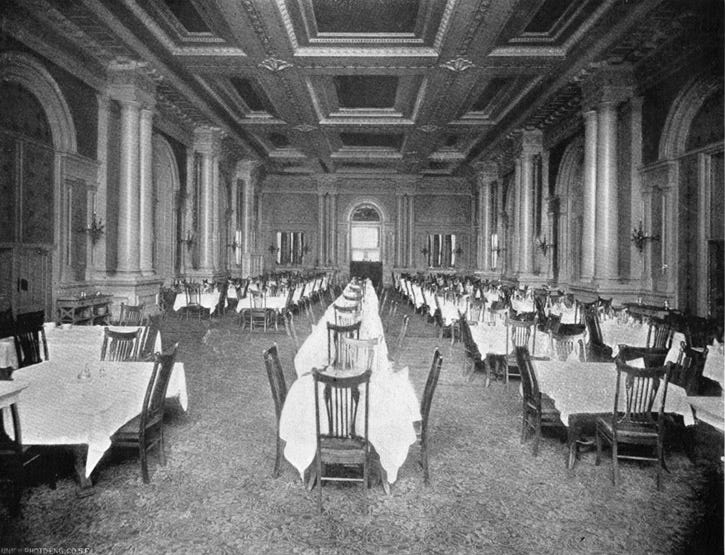
I'd never heard of a Lalla Rookh before and now that I know it's vanilla ice cream laced with rum, possibly mixed with instant coffee in the modern version, and covered with walnuts, I quite fancy one! 😋